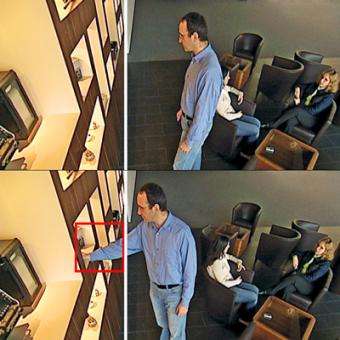Motion Detector That Also Has 'Eyes'

A new motion detector from Siemens can not only sense the body heat of suspicious individuals — it can also see them.
The “Eyetec” system is equipped with an infrared detector that’s complemented by an optical sensor capable of recognizing motion patterns up to 15 meters away. Sophisticated algorithms are used to evaluate these patterns and determine their relative plausibility.
If an alarm is triggered, the detector archives the images so that they can later be used to trace the cause of an incident. At the International Fire and Security Exhibition and Conference (IFSEC) in Birmingham, Eyetec recently was honored with the Security Industry Award.
Developed by Siemens Building Technologies, Eyetec is the world’s only dual-principle motion detector that combines infrared and optical sensor technology. Because of this combination, the system almost eliminates the risk of false alarms. And while many conventional motion detectors only notice infrared radiation, such as that caused by body heat, the Optical Detection System (ODS) installed in Eyetec employs a CMOS sensor and fuzzy logic to also determine an object’s size, speed and direction of travel. The IRO Com Tool software allows users to set the conditions for triggering an alarm, either directly at the detector or at a PC.
This makes it possible to prevent animals from triggering the alarm, because their size doesn’t correspond to that of human beings. The detector can also be set to trigger an alarm if it senses people walking in a particular direction. This means, for example, that museum staff can monitor if visitors actually leave the exhibition rooms after it is announced that the museum is closing for the day. In addition, the user can freely define specific surveillance zones.
By marking certain areas on a live image of a monitored room, for example, the user can allow people to enter these zones without triggering the alarm. This would allow museum visitors to walk freely around exhibits positioned at various points in a room. The detector notices if anyone attempts to block or cover the sensor monitoring the room. Thanks to its anti-blocking function, the detector immediately triggers the alarm if its field of vision is blocked in any way.
Source: Siemens





















